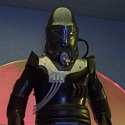|
I've been watching a lot of Andy Warhol films lately, despite their difficulty to track down (the Warhol Foundation does not make this easy). But there's a fascinating quality to his sort of "still-life" portrait films like Empire and Eat. And then there's the improvised/unrehearsed raw quality of his "narrative" films like Vinyl. https://www.youtube.com/watch?v=XoQcGAczNTE There's a hypnotic quality to these films, where his focus on single shots for extended periods of time allow you to really appreciate everything in the frame. Of course there's always the point about how the minimalism of Empire makes something as simple as the lights of the Empire State Building turning on become a huge exciting moment. Or in a film like Eat, you start to soak in everything about this man eating this piece of fruit, and you consider what he's wearing, what his face looks like, what the fruit he's eating is, the motion of his chewing. The tiniest details can become major revelations. This is true of any film, but Warhol draws our attention them. Cinema is about what's in the frame, and we can get so caught up in stories and rapid camera movements that we forget to look for the details. https://www.youtube.com/watch?v=FmzqNUaCGQU I've been particularly interested recently in his film Vinyl, which is an adaptation of Anthony Burgess' A Clockwork Orange (six years before Kubrick's straight adaptation). It takes many of the elements of the novel, including scenes where the Alex DeLarge character harasses an old man about books, but it's purely a Warhol work. A single still shot for an hour, filmed from a screenplay but completely unrehearsed, and he introduces some leather/vinyl bondage. At one point the Alex character dances to Nowhere to Run by Martha and the Vandellas for the full length of the song, only for the song to immediately start all over again once it's ended. It makes for an interesting companion piece to the Kubrick film, and a great showcase of how adaptation can be completely different from the source material while still being true to it. https://www.youtube.com/watch?v=2IKoPViGmGI I've actually never seen some of his more famous works like Chelsea Girls and The Nude Restaurant, although I've managed to track down copies of them that I'll probably be watching soon. But anyway, I'm curious how everyone else feels about them. https://www.youtube.com/watch?v=hLW_sXv44Uc
|
|
|
|

|
| # ? Apr 24, 2024 21:16 |
|
TrixRabbi posted:I've been watching a lot of Andy Warhol films lately, despite their difficulty to track down (the Warhol Foundation does not make this easy). But there's a fascinating quality to his sort of "still-life" portrait films like Empire and Eat. And then there's the improvised/unrehearsed raw quality of his "narrative" films like Vinyl. Nice one TrixRabbi, I've never really watched much Warhol, only the Paul Morrissey directed films, so thanks for the links. There was a nice anecdote I read recently about Warhol's potential filming of The Bible, where he intended each page of an actual bible to fill the screen, and for a period long enough to allow for reading, until finished. I know Vogel, the subversive cinema guy, loved Warhol for his minimalism. That in the age of visual and symbolic overload the return of a sustained and focused cinema recording simple acts becomes far more powerful, almost like what Robbe-Grillet was trying to do with his novels. I think I kind of agree with the sentiment, his films seem to deny the ability for metaphor whilst at the same time being evocative. The subjects are often filled with metaphor and meaning (a man kissing, the Empire state building, The Artist eating a burger) but they're filmed in a way that removes the mystique from them.
|
|
|
|
harpomarxist posted:Nice one TrixRabbi, I've never really watched much Warhol, only the Paul Morrissey directed films, so thanks for the links. There was a nice anecdote I read recently about Warhol's potential filming of The Bible, where he intended each page of an actual bible to fill the screen, and for a period long enough to allow for reading, until finished. It always irked me that Morrissey tended to get overshadowed by having Warhol's name on his films. Obviously it helped to sell them, but it seems that people always think of them as "Andy Warhol's Dracula" or "Andy Warhol's Trash" rather than as Morrissey's. And yeah, removing the mystique is a great way to put it. Warhol gives you the time to really examine and take in every single detail of the frame, much like Bela Tarr or Tarkovsky, except to the furthest extreme possible. You find yourself playing games like counting the number of windows in the Empire State Building, picking up on things you never would have noticed if there were a story speeding the shot along. Also, curiously I just rewatched Kubrick's A Clockwork Orange last night and realized that both it and Vinyl share the same opening shot. A prolonged close-up on Alex's (or Victor in Vinyl) face, followed by a slow, perfectly centered, backwards tracking shot revealing the depraved world he inhabits. Kubrick was such a film buff I'm willing to bet he tracked down a print of Vinyl to see in preparation, but I wonder if this was a deliberate reference/homage/rip-off, or just a coincidence. TrixRabbi fucked around with this message at 21:47 on Oct 20, 2014 |
|
|





